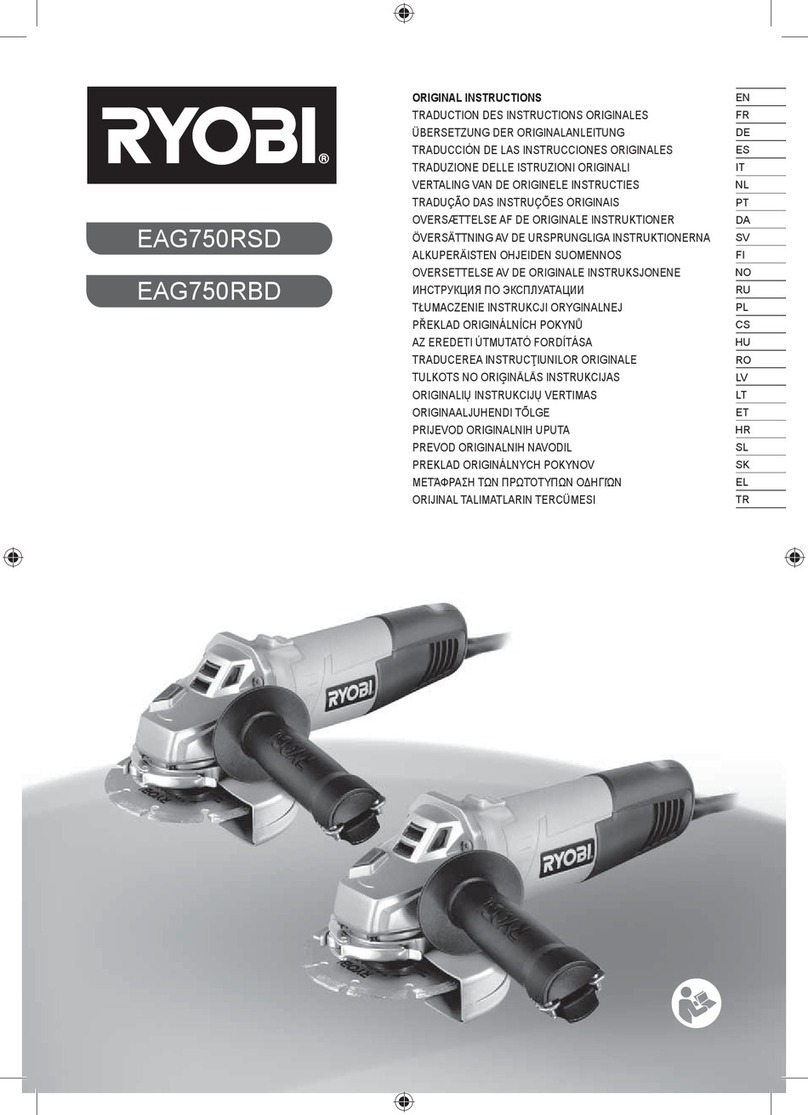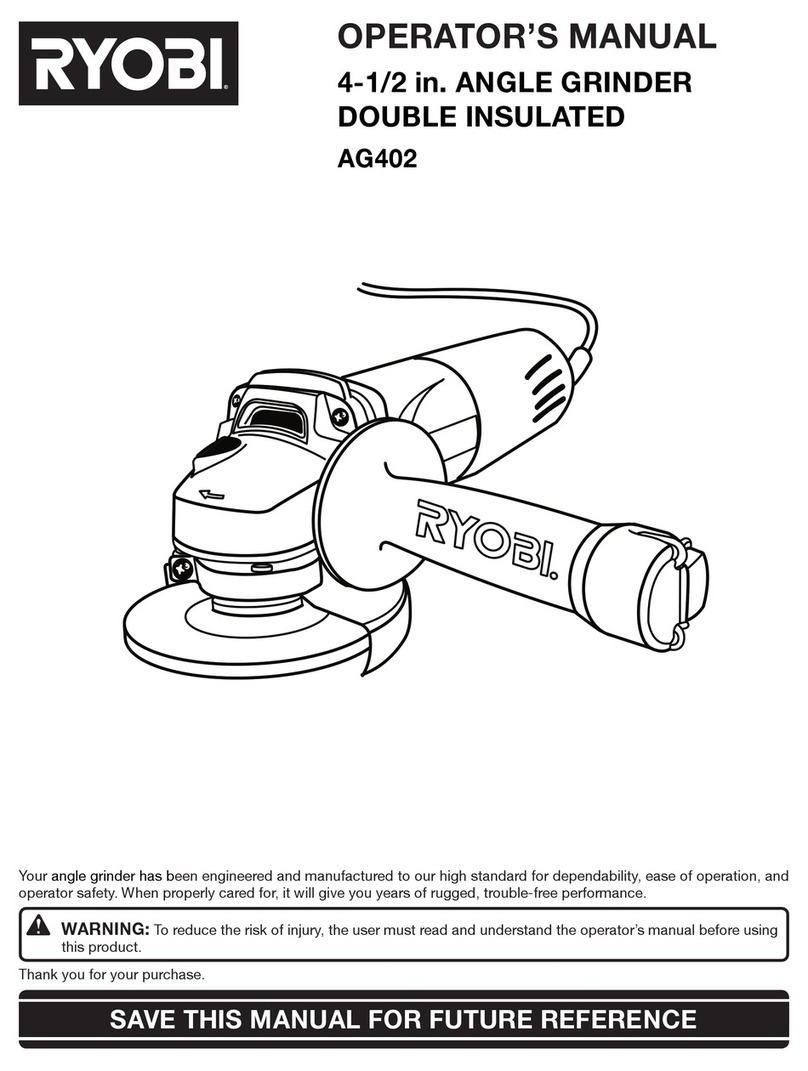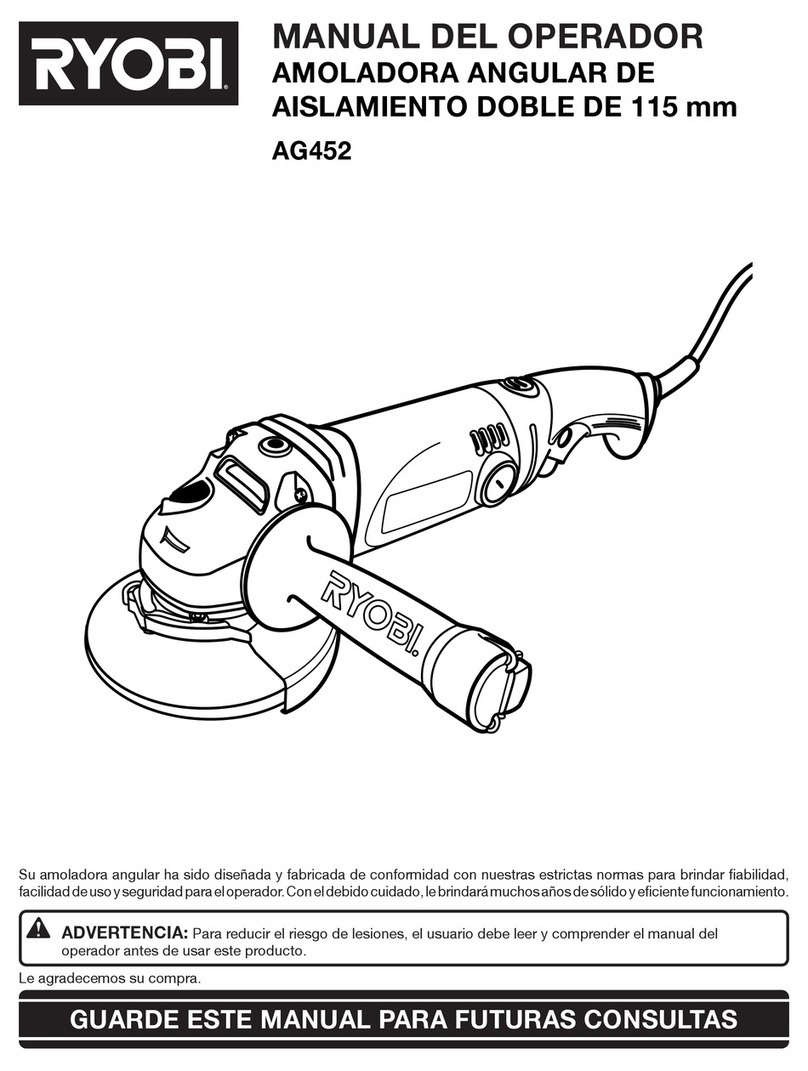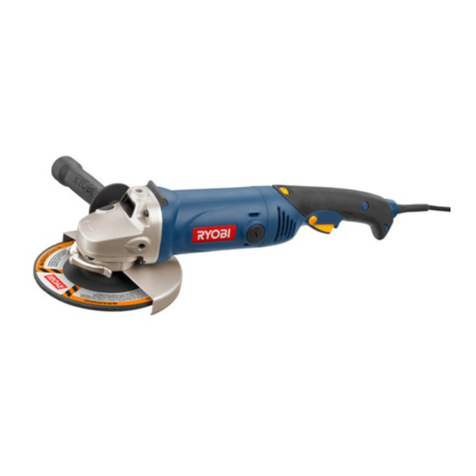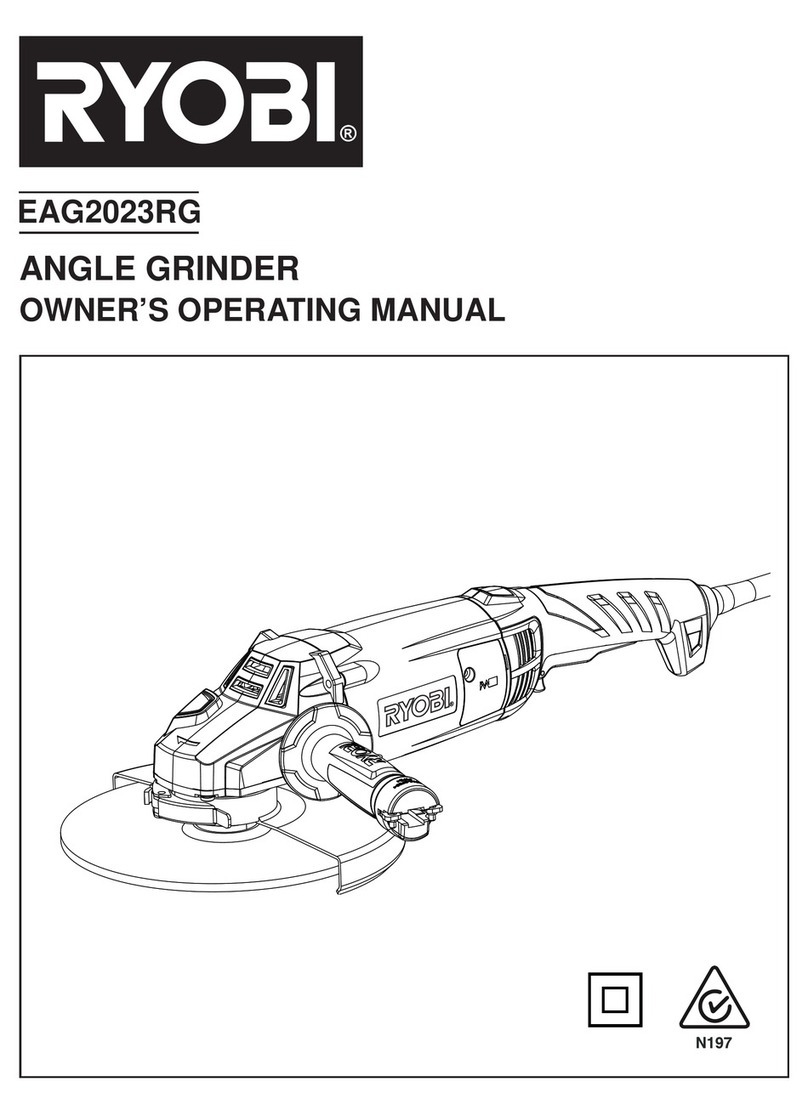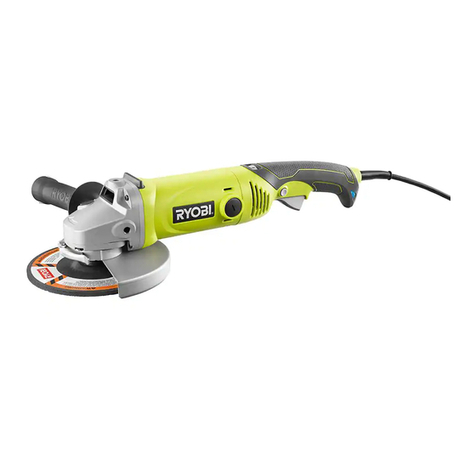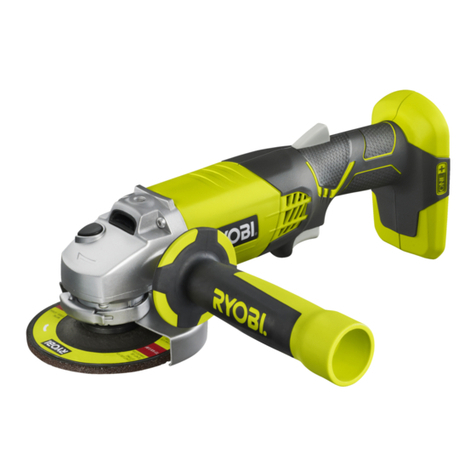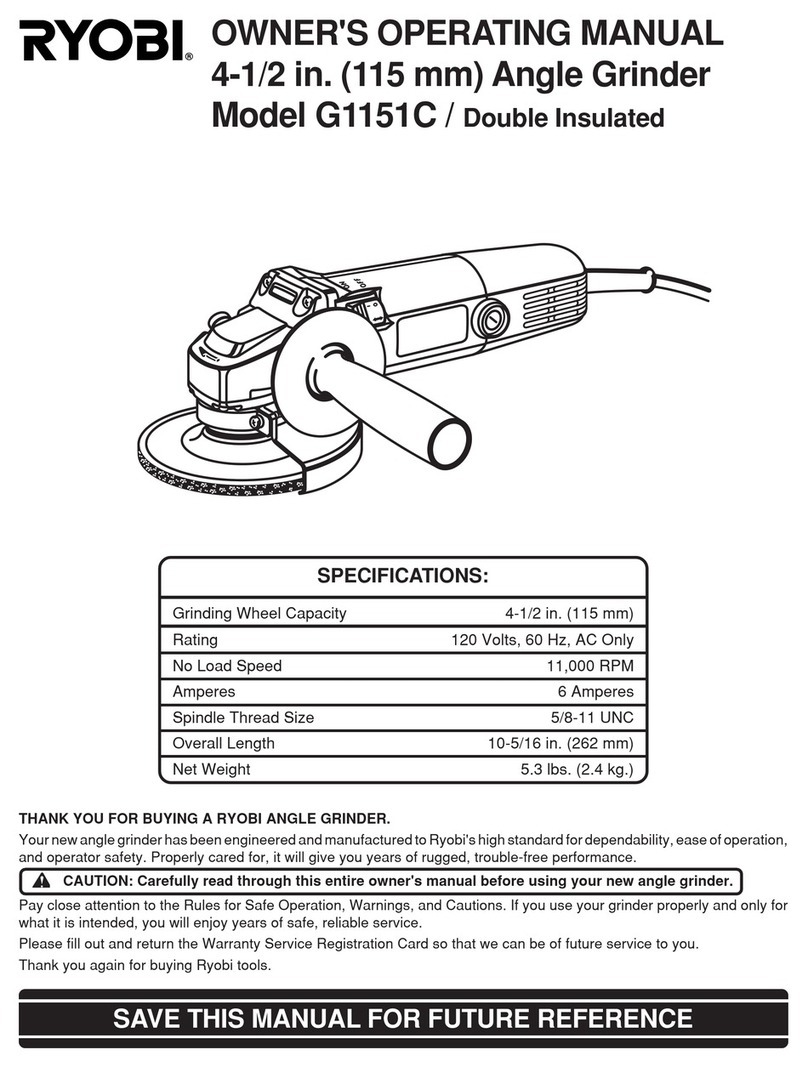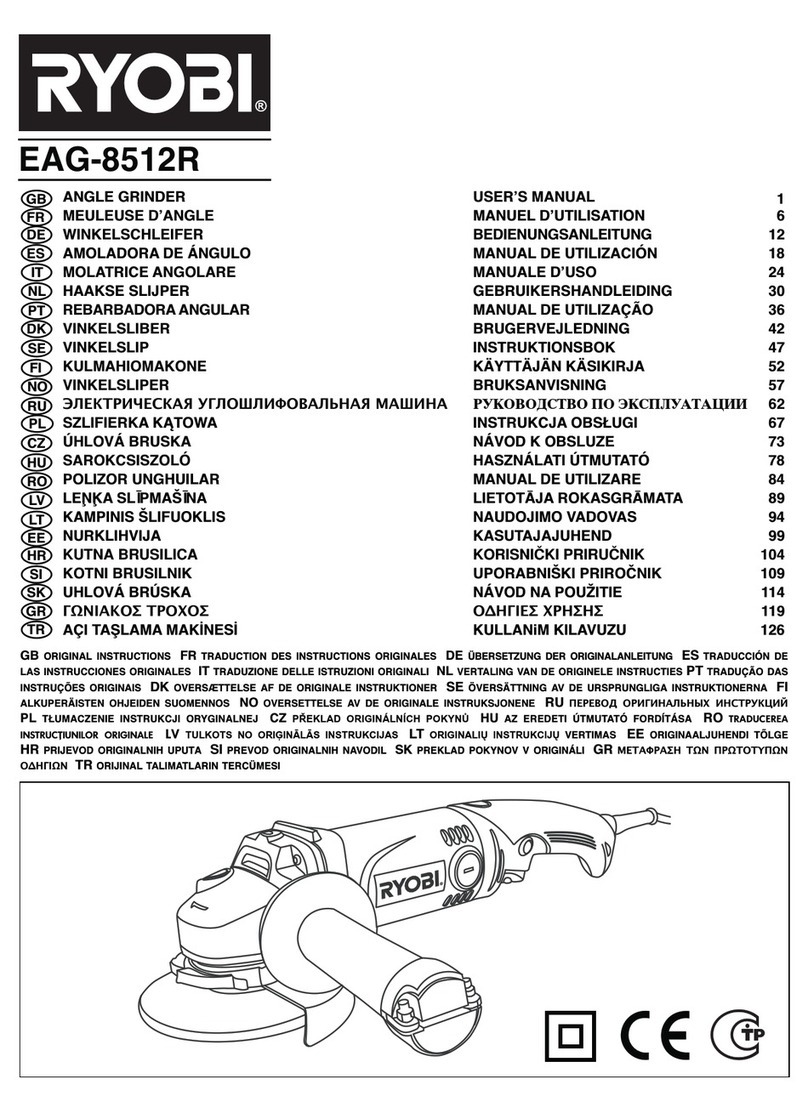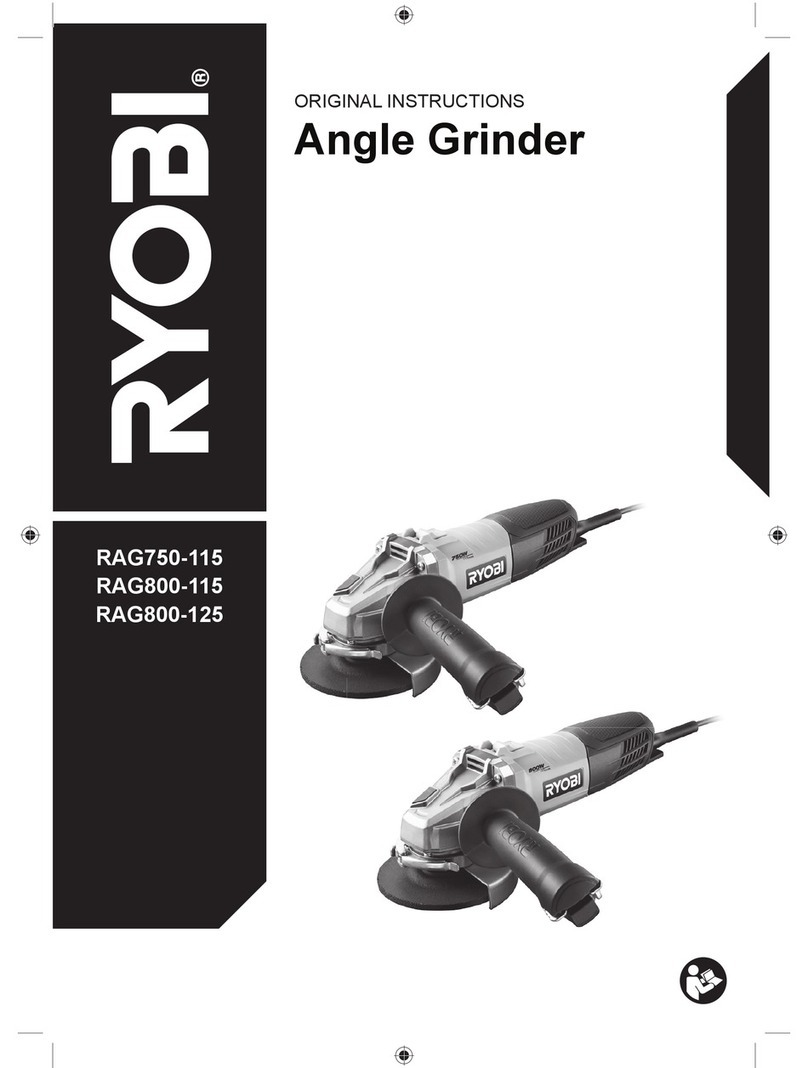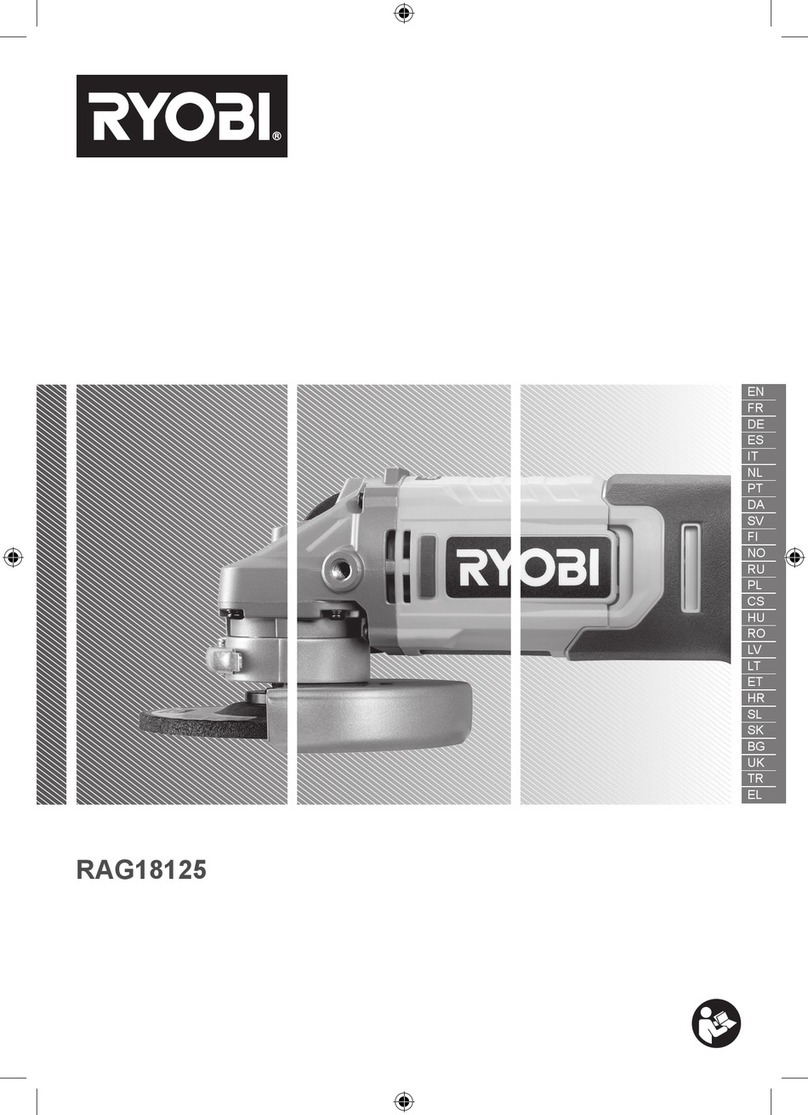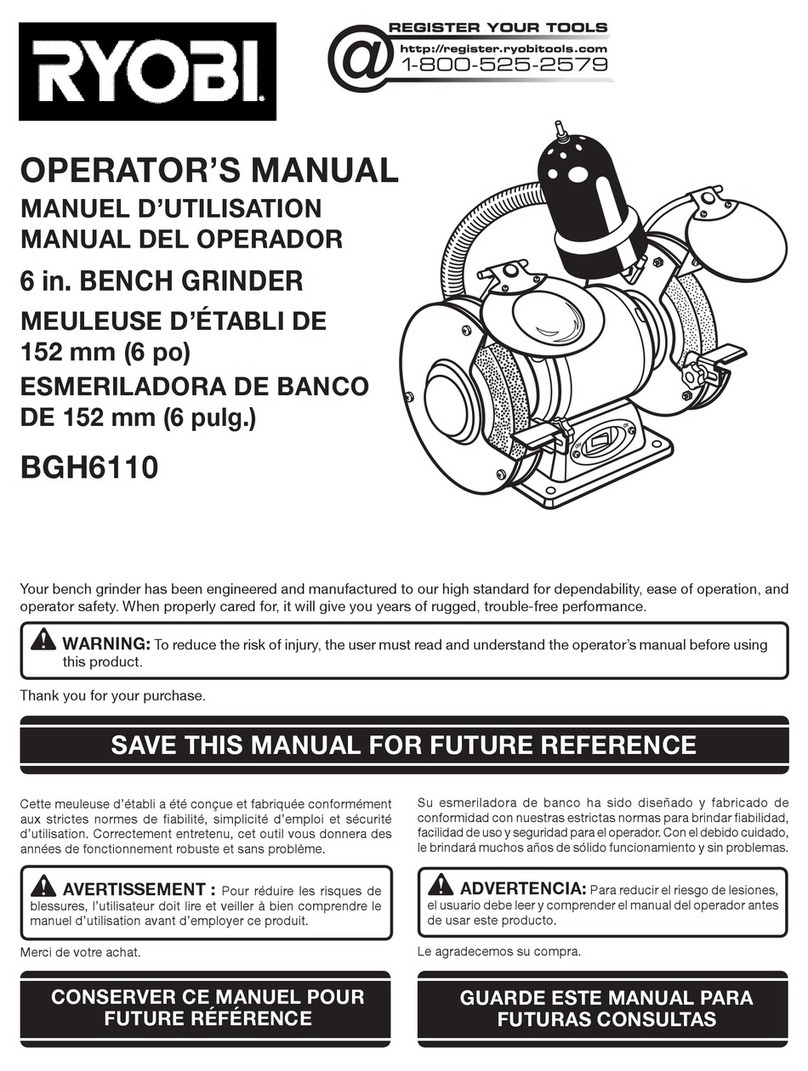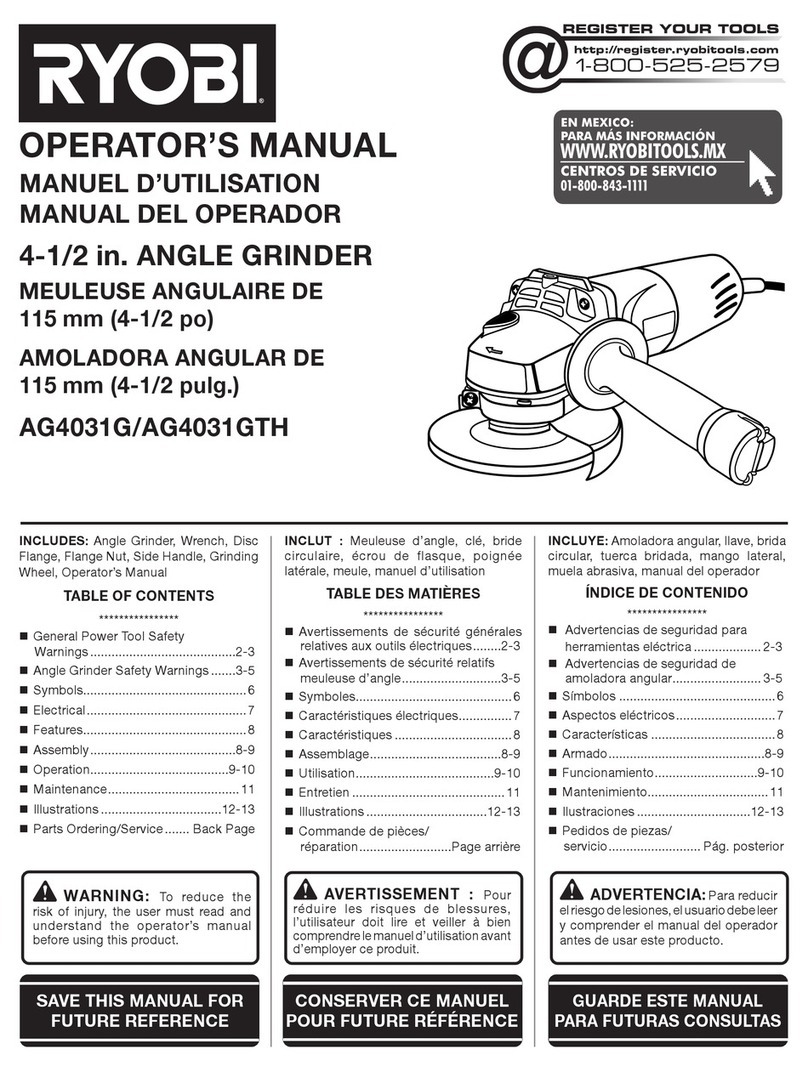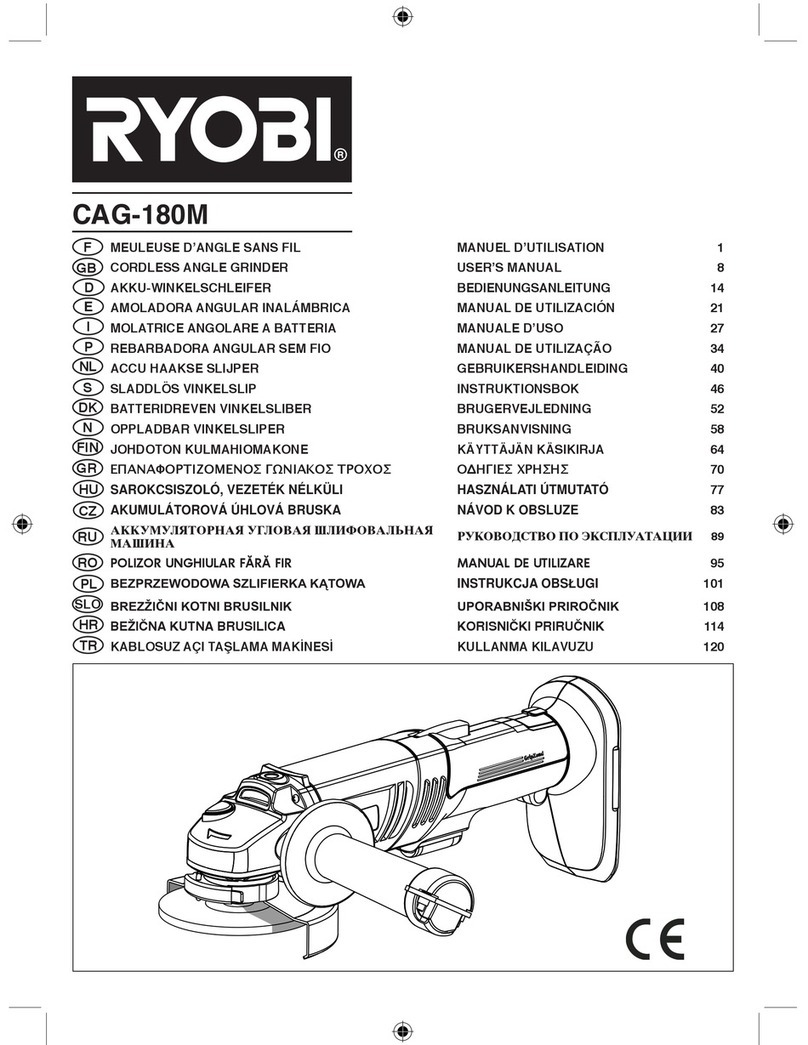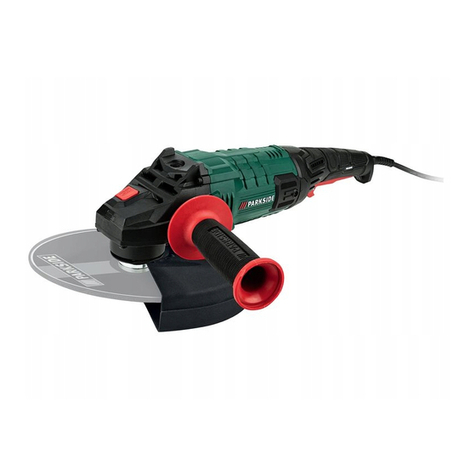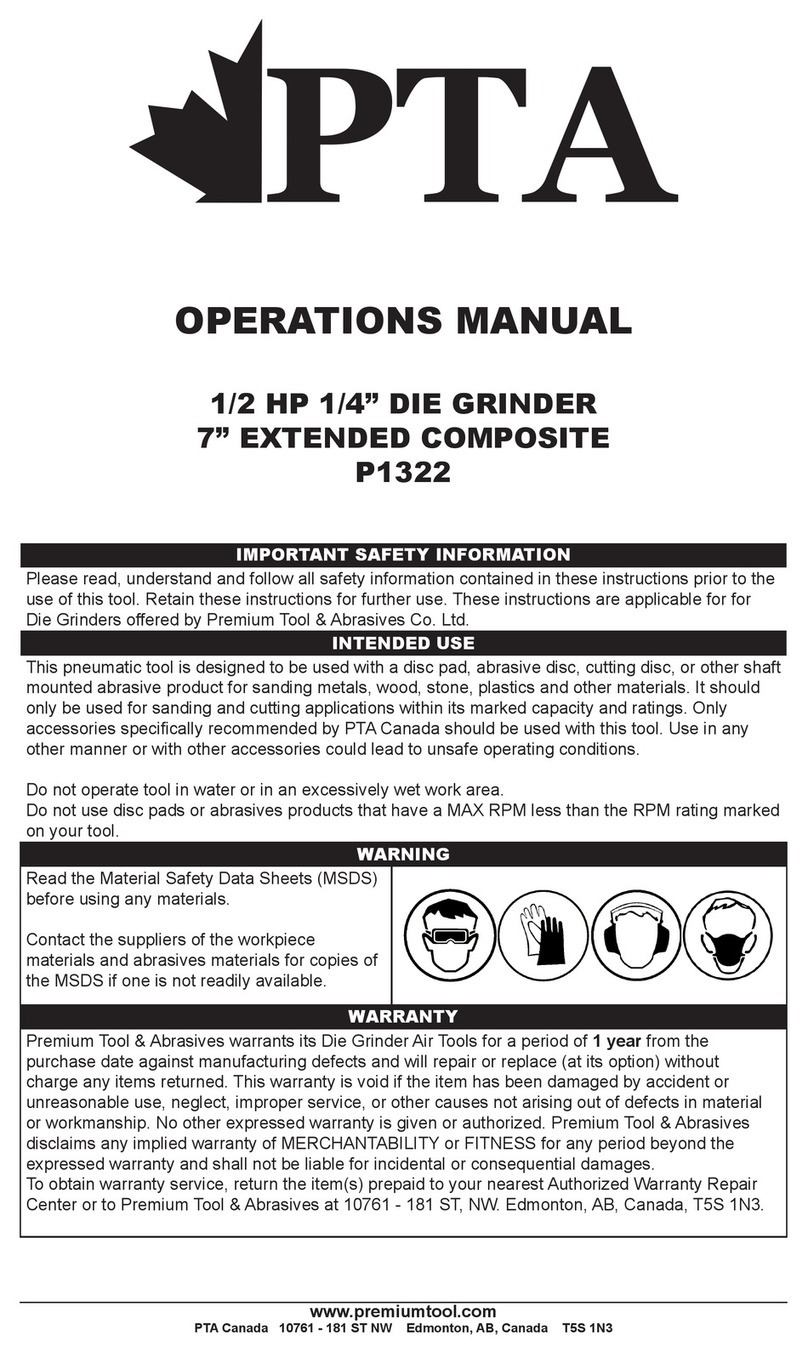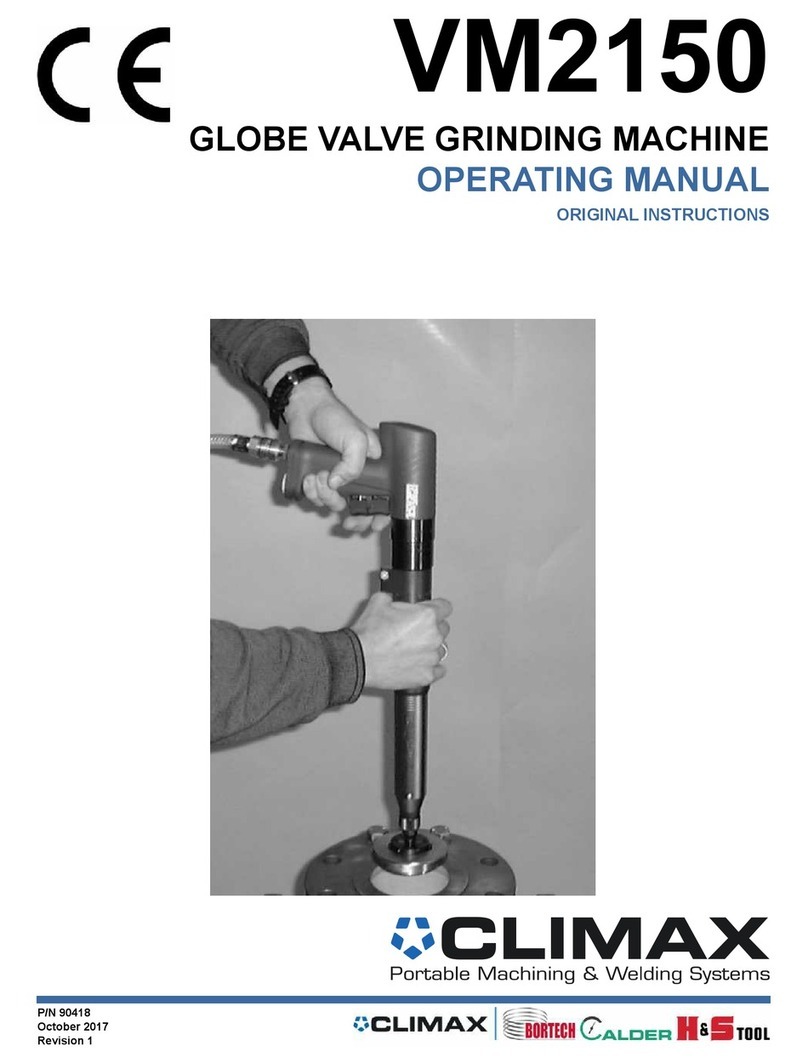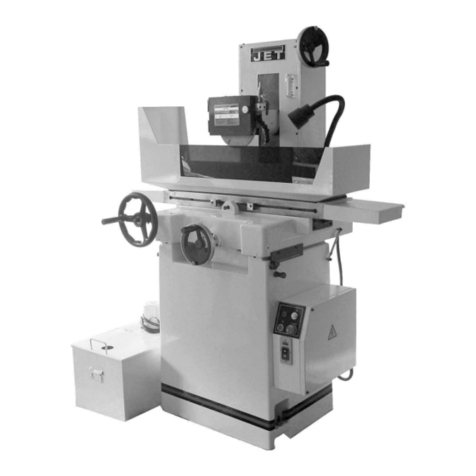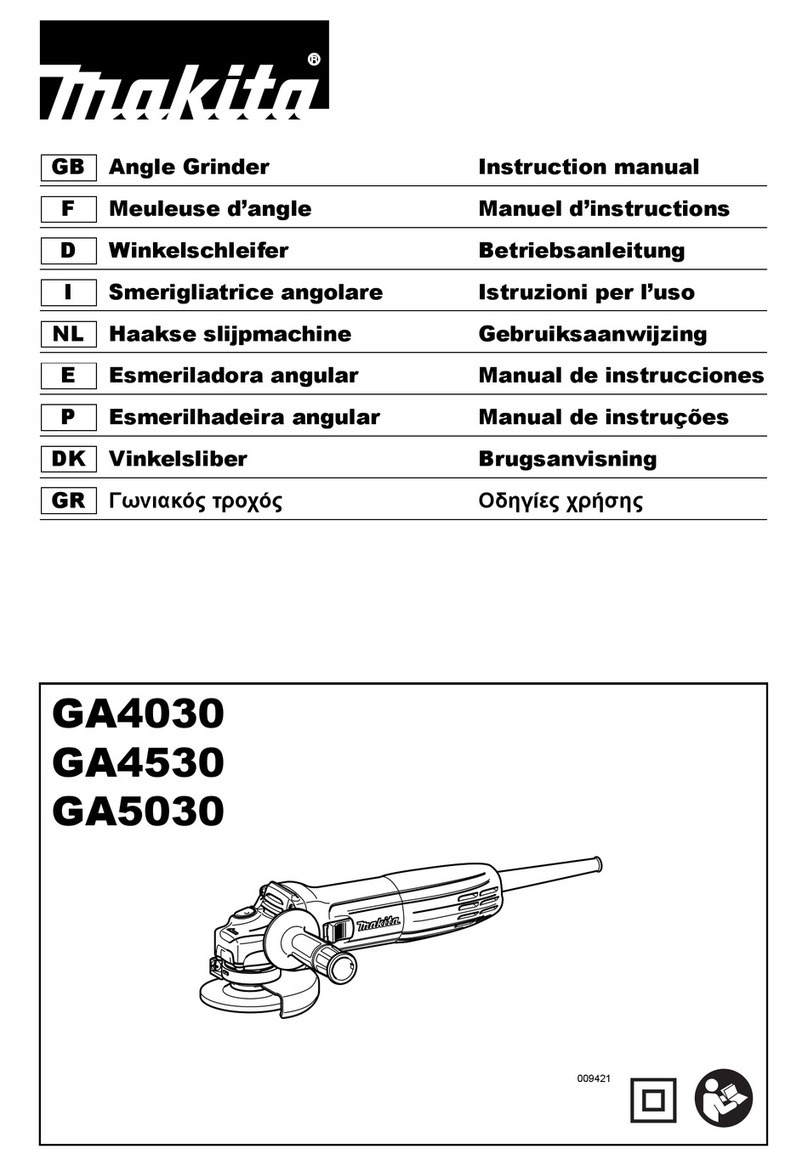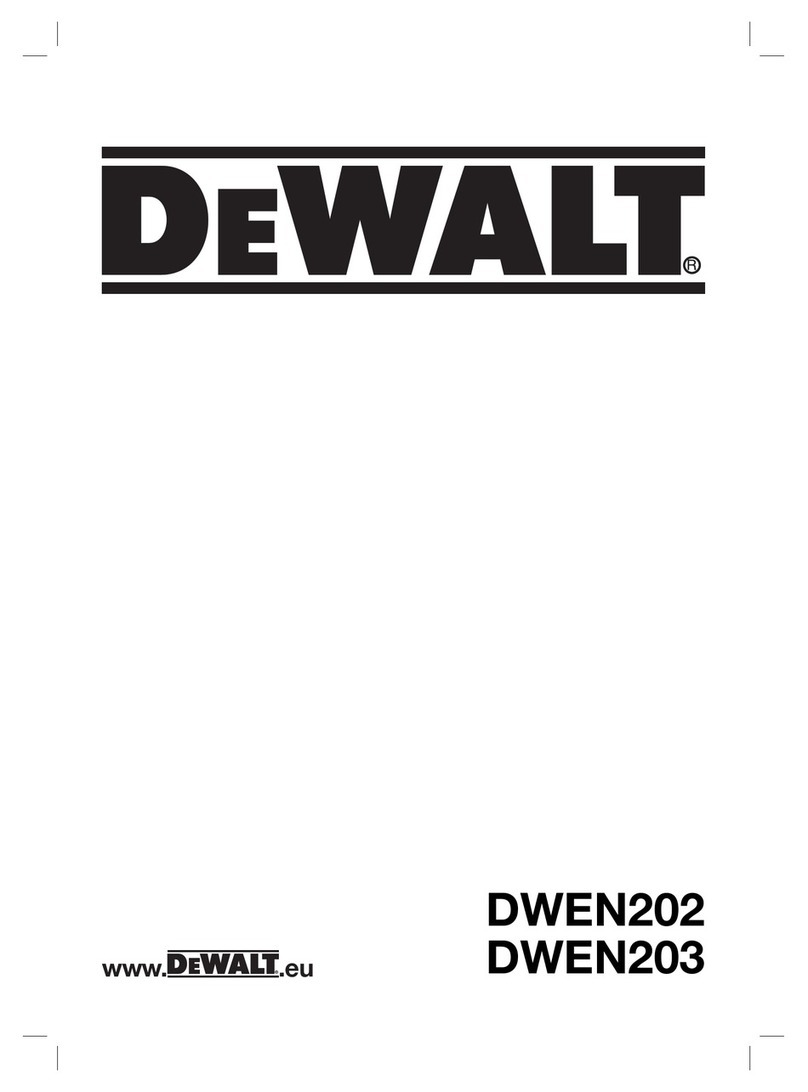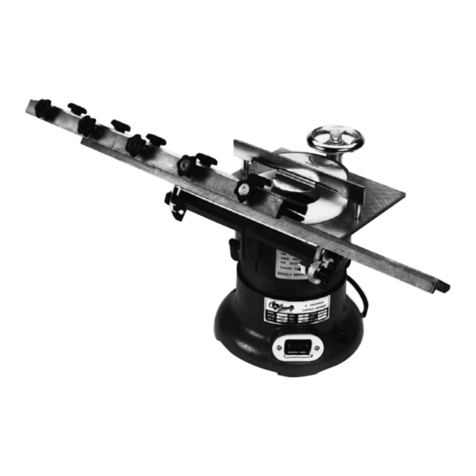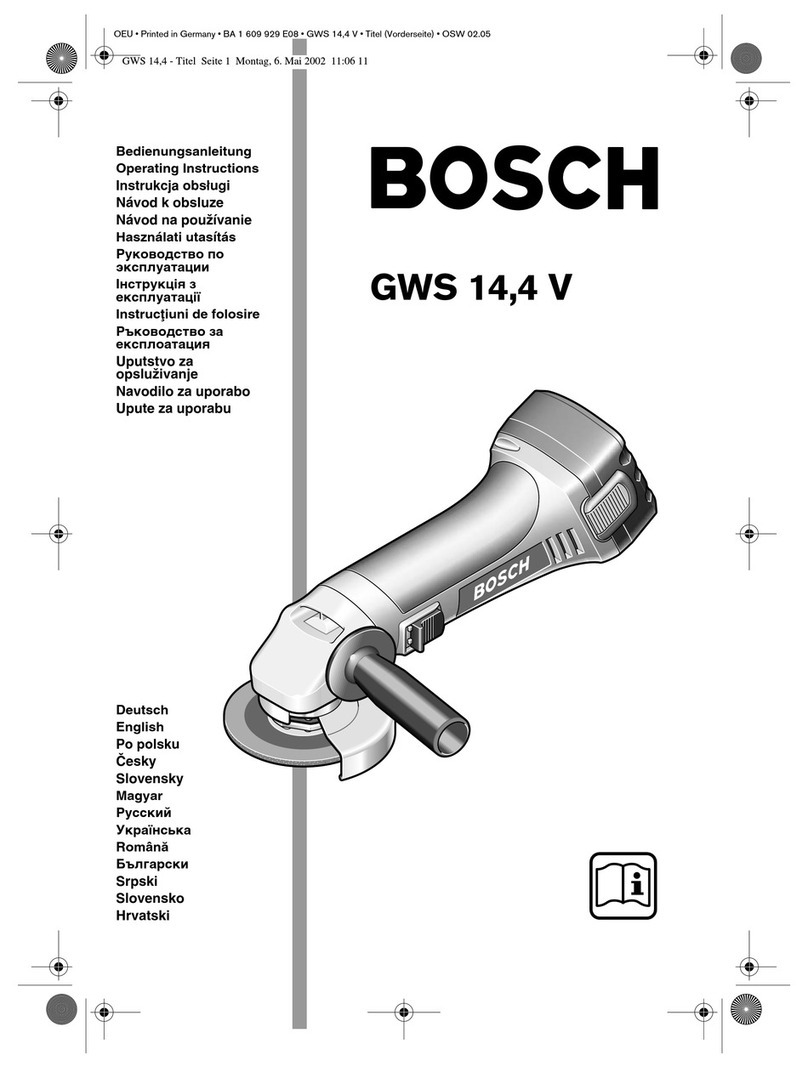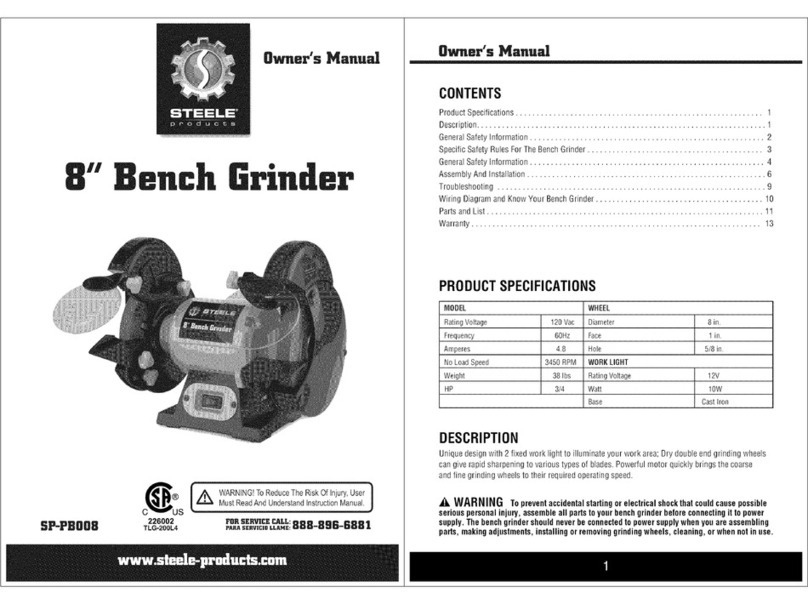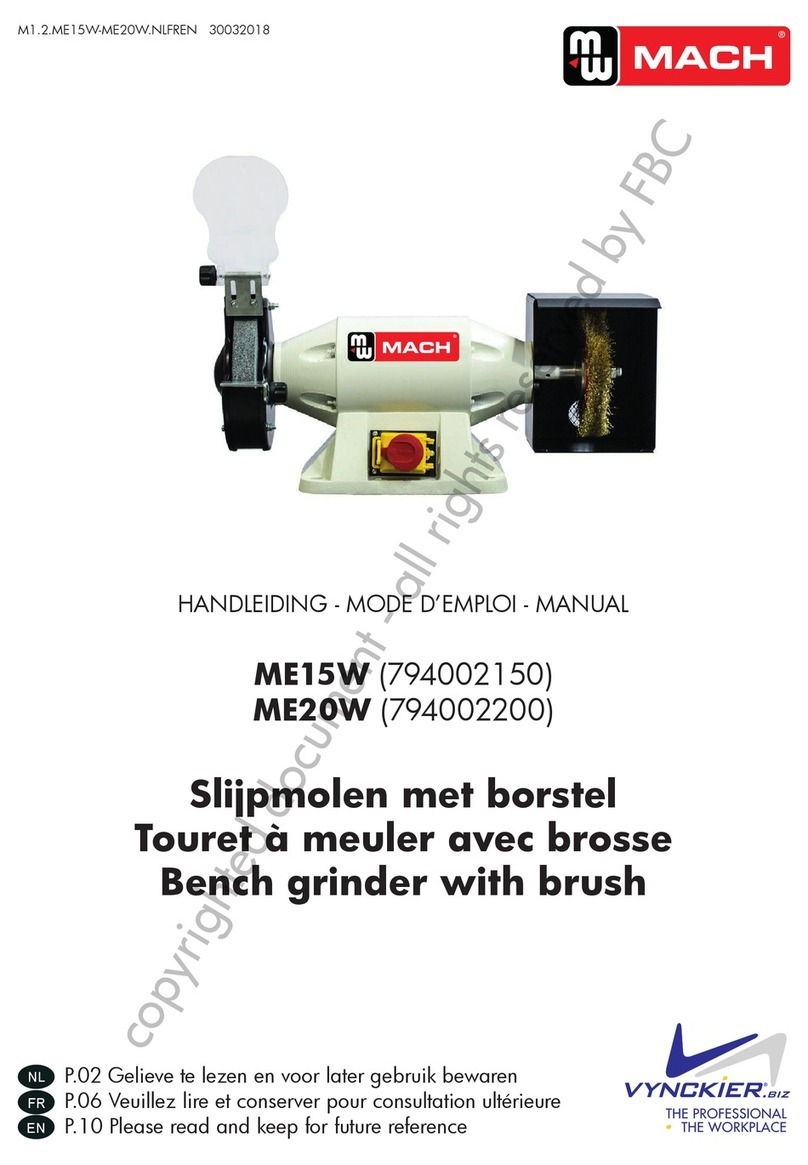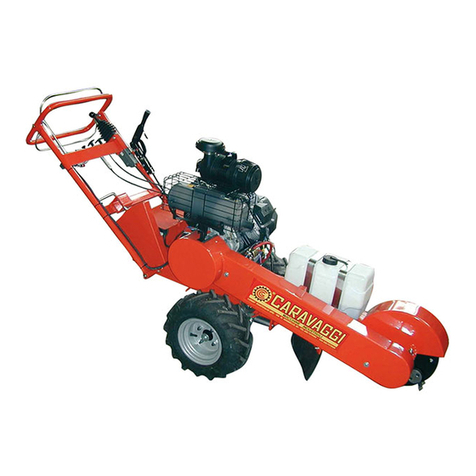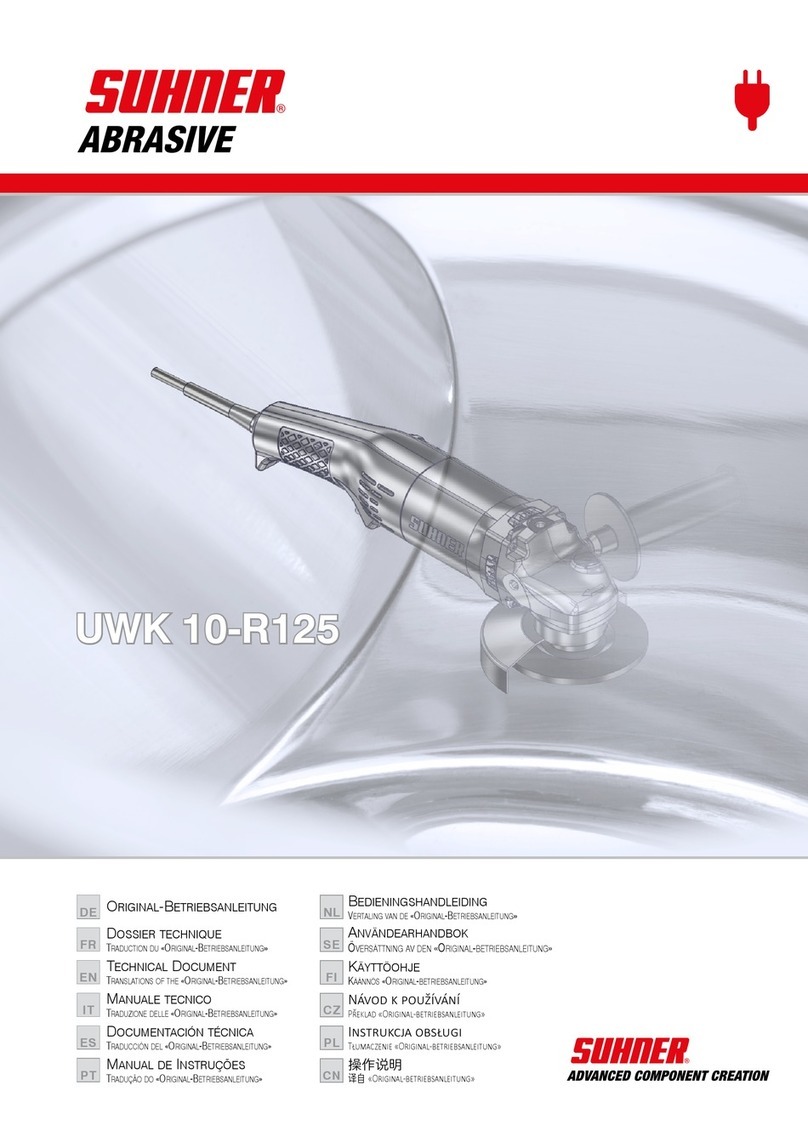
1English |
EN
FR
DE
ES
IT
NL
PT
DA
SV
FI
NO
RU
PL
CS
HU
RO
LV
LT
ET
HR
SL
SK
EL
TR
UK
Safety, performance, and dependability have been given
top priority in the design of your angle grinder.
INTENDED USE
The angle grinder is intended to be used only by adults who
have read and understood the instructions and warnings
in this manual and can be considered responsible for their
actions. The angle grinder is designed for grinding and
cutting metals only. Only appropriate grinding discs as
GHVFULEHGLQWKHSURGXFWVSHFL¿FDWLRQVHFWLRQRIWKLVPDQXDO
VKRXOGEH¿WWHGWRWKHDQJOHJULQGHU7KHDQJOHJULQGHULV
designed for handheld use; it is not to be mounted onto a
¿[WXUHRUZRUNEHQFK
WARNING
Read all safety warnings and all instructions. Failure
to follow the warnings and instructions may result in
HOHFWULFVKRFN¿UHDQGRUVHULRXVLQMXU\
Save all warnings and instructions for future reference.
ANGLE GRINDER SAFETY WARNINGS
SAFETY WARNINGS COMMON FOR GRINDING OR
ABRASIVE CUTTING-OFF OPERATIONS:
a) This power tool is intended to function as a
grinder or cut-off tool. Read all safety warnings,
instructions, illustrations and specifications
provided with this power tool. Failure to follow
all instructions listed below may result in electric
VKRFNILUHDQGRUVHULRXVLQMXU\
b) Operations such as sanding, wire brushing
or polishing are not recommended to be
performed with this power tool. Operations for
which the power tool was not designed may create
DKD]DUGDQGFDXVHSHUVRQDOLQMXU\
c) Do not use accessories which are not
specifically designed and recommended by the
tool manufacturer. Just because the accessory
can be attached to your power tool does not assure
safe operation.
d) The rated speed of the accessory must be at
least equal to the maximum speed marked on
the power tool. Accessories running faster than
WKHLUUDWHGVSHHGFDQEUHDNDQGIO\DSDUW
e) The outside diameter and the thickness of your
accessory must be within the capacity rating
of your power tool. Incorrectly sized accessories
cannot be adequately guarded or controlled.
f) Threaded mounting of accessories must match
the grinder spindle thread. For accessories
mounted by flanges, the arbour hole of the
accessory must fit the locating diameter of
the flange. Accessories that to do not match the
mounting hardware of the power tool will run out of
EDODQFHYLEUDWHH[FHVVLYHO\ DQGPD\ FDXVHORVV
of control.
g) Do not use a damaged accessory. Before each
use inspect the accessory such as abrasive
wheels for chips and cracks, backing pad
for cracks, tear or excess wear, wire brush
for loose or cracked wires. If power tool or
accessory is dropped, inspect for damage
or install an undamaged accessory. After
inspecting and installing an accessory,
position yourself and bystanders away from
the plane of the rotating accessory and run the
power tool at maximum no-load speed for one
minute.'DPDJHGDFFHVVRULHVZLOOQRUPDOO\EUHDN
apart during this test time.
h) Wear personal protective equipment.
Depending on application, use face
shield, safety goggles or safety glasses.
As appropriate, wear dust mask, hearing
protectors, gloves and workshop apron
capable of stopping small abrasive or
workpiece fragments. The eye protection must
be capable of stopping flying debris generated by
YDULRXV RSHUDWLRQV 7KH GXVW PDVN RU UHVSLUDWRU
must be capable of filtrating particles generated
E\ \RXU RSHUDWLRQ 3URORQJHG H[SRVXUH WR KLJK
intensity noise may cause hearing loss.
i) Keep bystanders a safe distance away from
work area. Anyone entering the work area must
wear personal protective equipment. Fragments
RI ZRUNSLHFH RU RI D EURNHQ DFFHVVRU\ PD\ IO\
DZD\DQGFDXVHLQMXU\EH\RQGLPPHGLDWHDUHDRI
operation.
M Hold the power tool by insulated gripping
surfaces only, when performing an operation
where the cutting accessory may contact
hidden wiring or its own cord. Cutting accessory
FRQWDFWLQJD³OLYH´ZLUHPD\PDNHH[SRVHGPHWDO
parts of the power tool “live” and could give the
RSHUDWRUDQHOHFWULFVKRFN
N Position the cord clear of the spinning
accessory. If you lose control, the cord may be cut
or snagged and your hand or arm may be pulled
into the spinning accessory.
l) Never lay the power tool down until the
accessory has come to a complete stop. The
spinning accessory may grab the surface and pull
the power tool out of your control.
m) Do not run the power tool while carrying it at
your side. Accidental contact with the spinning
accessory could snag your clothing, pulling the
accessory into your body.
n) Regularly clean the power tool’s air vents. The
motor’s fan will draw the dust inside the housing
DQG H[FHVVLYH DFFXPXODWLRQ RI SRZGHUHG PHWDO
may cause electrical hazards.
o) Do not operate the power tool near flammable
materials.6SDUNVFRXOGLJQLWHWKHVHPDWHULDOV
p) Do not use accessories that require liquid
coolants. Using water or other liquid coolants may
UHVXOWLQHOHFWURFXWLRQRUVKRFN
FURTHER SAFETY INSTRUCTIONS FOR ALL
OPERATIONS
Kickback and related warnings
.LFNEDFN LV D VXGGHQ UHDFWLRQ WR D SLQFKHG RU VQDJJHG
URWDWLQJZKHHOEDFNLQJSDGEUXVKRUDQ\RWKHUDFFHVVRU\
Pinching or snagging causes rapid stalling of the rotating
accessory, which in turn causes the uncontrolled power
tool to be forced in the direction opposite of the accessory’s
rotation at the point of the binding.
)RUH[DPSOHLIDQDEUDVLYHZKHHOLVVQDJJHGRUSLQFKHG
E\ WKH ZRUNSLHFH WKH HGJH RI WKH ZKHHO WKDW LV HQWHULQJ
into the pinch point can dig into the surface of the material
FDXVLQJWKHZKHHOWRFOLPERXWRUNLFNRXW7KHZKHHOPD\
HLWKHUMXPSWRZDUGRUDZD\IURPWKHRSHUDWRUGHSHQGLQJ
on the direction of the wheel’s movement at the point of

